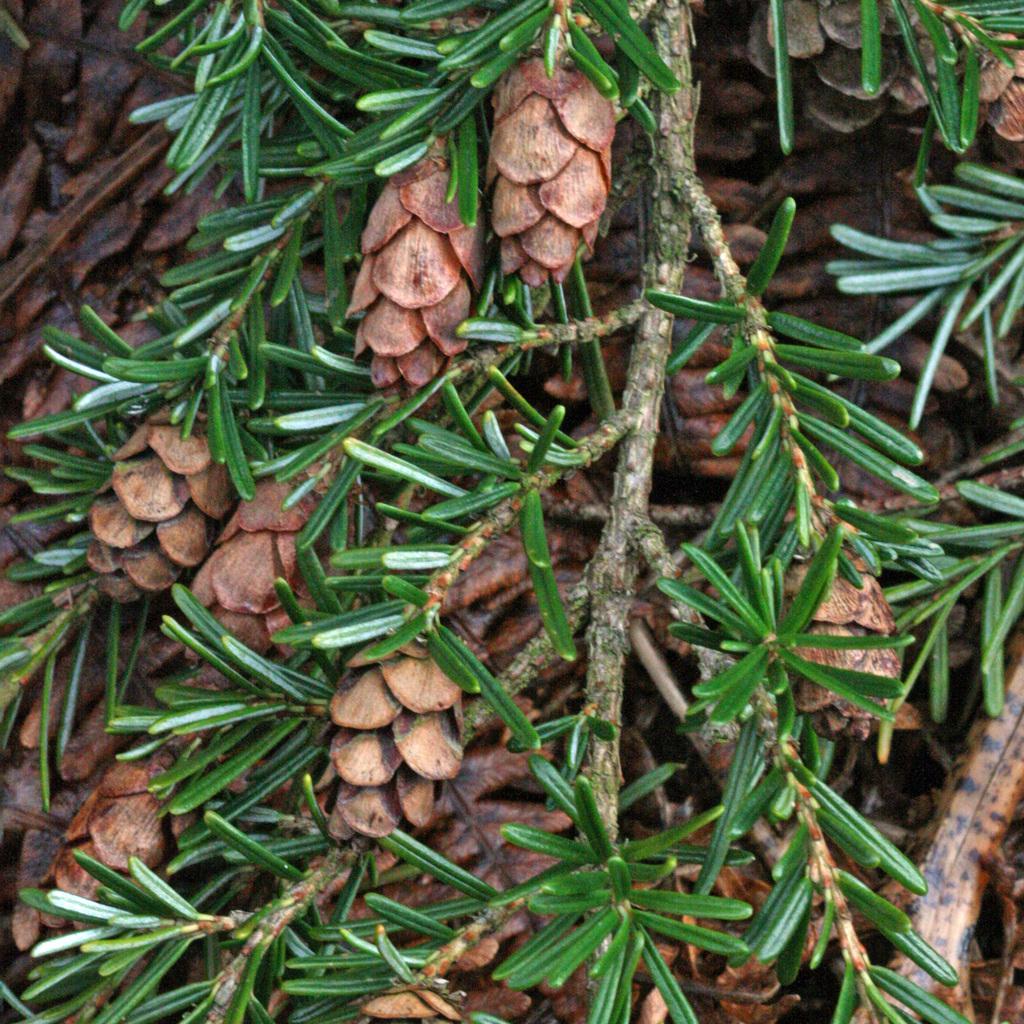Western Hemlocks are tall evergreens (90-200 ft) with a narrow crown. The new growth at the top of the trees often droops. Most of the branches swoop downwards. The trees are common in the mild, humid climate of the Pacific Northwest and are often found growing below other trees as they're shade-tolerant.
The needles are short, flat, and of unequal length with a soft, feathery appearance. They are yellowish-green on top and white below. The bark is red to dark brown, furrowed, and scaly. It has numerous small oval (.5-1 in) cones hanging from the end of twigs.
Mountain Hemlocks are less common and are usually found at higher elevations. Their blue-green needles are all the same size and uniformly arranged around the twig; small clusters can appear star-like. Their cones are cylindrical and 2-3 times larger than those of Western Hemlocks.
Did you know? Western Hemlocks have very shallow root systems. They can be blown over in a wind storm and are easily damaged by fire.
See Also: Balsam Fir, Common Juniper, Douglas-fir, Engelmann Spruce, Jack Pine, Lodgepole Pine, Rocky Mountain Juniper, Spruce, Tamarack, Western Larch, Western Redcedar, Whitebark Pine







